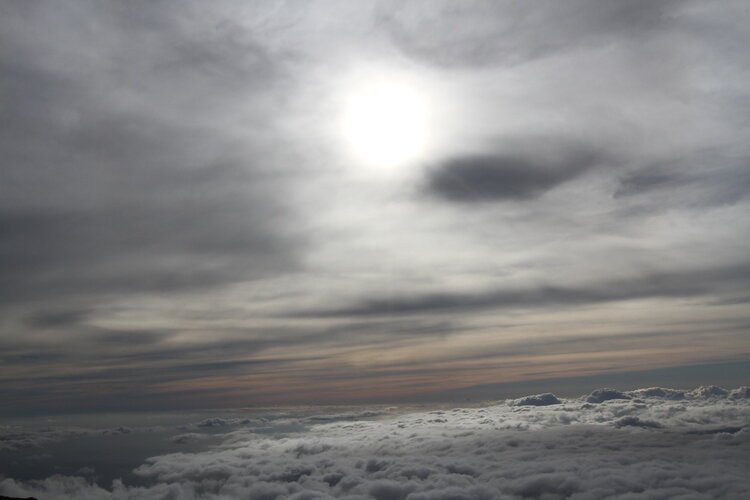Haleakala
Location: Maui, Hawaii
Established: August 1, 1916
Haleakala National Park covers the summit area of the larger of the two volcanic mountains that make up Maui, with the Haleakala Crater as its centerpiece. A visit to Haleakala is a must-see; however, getting to the park is no easy feat, as you must travel along Haleakala Crater Road — rising from near sea-level to 10,023 feet in 38 miles -- the fastest-ascending road in the world. Along the way, there are many switchbacks, blind turns and steep dropoffs without guardrails while you journey from lush, tropical-island landscape to the stark, moonlike basin of the enormous crater.
After stopping at the Park Headquarters Visitor Center (7,000 feet of elevation), we continued on to the Leleiwi Overlook (8,800 feet), which offers you your first awe-inspiring view of the crater. Our next stop was Kalahaku Overlook where we viewed the famous silversword plant. The rare plant grows only here and at the Big Island's two peaks. Silverswords live between 3 and 90 years or more, flowering once at maturity — sending up a spectacular flowering stalk — and then die soon afterward, scattering drying seeds to the wind. Next is Haleakala Visitor Center (9,740 feet) with exhibits inside and a trail that leads to White Hill—a short, easy walk with even better views of the valley. Our final stop was the Puu Ulaula Overlook, the highest point on Maui, at 10,023 feet. The view above the clouds was spectacular, but keep in mind that the air is thin at 10,000 feet, so don't be surprised if you feel a little breathless while walking around the summit. Be sure to take it easy and drink lots of water.
Here are a few interesting tidbits.
While Haleakala Crater is a vast depression, it’s actually not a volcanic crater. It was formed as erosion ate away a ridgeline, joining two valleys.
And, in case you were wondering, Haleakala means "house of the sun" in Hawaiian. Legend has it that the goddess Hina complained to her son, Maui, that the sun moved across the sky too fast for her tapa cloth to dry. The next morning before sunrise, Maui went to the top of Haleakala and waited in hiding. When the Sun awoke, Maui lassoed him, and beat him into submission. Maui then made the Sun an offer he couldn't refuse -- he would let the Sun go, but in return, the Sun would have to cross the sky much more slowly from that day forward. The Sun agreed, Maui released him, and we are now blessed with long sunny days!


